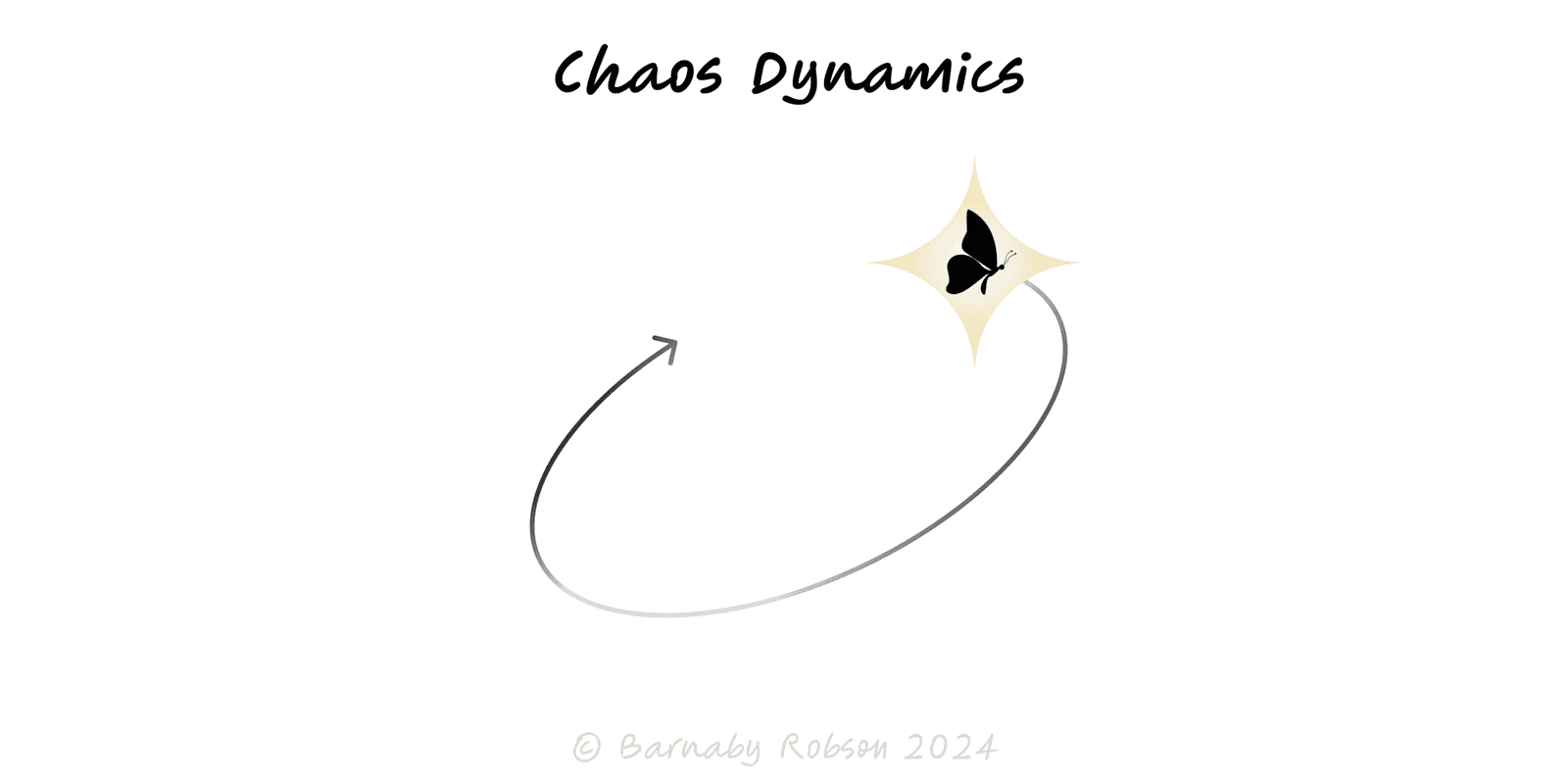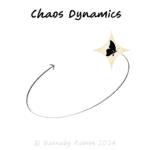Chaos Dynamics
Henri Poincaré (foundations), Edward Lorenz (weather “butterfly effect”), Robert May (logistic map) — modern systems thinking

Chaos is deterministic unpredictability: even simple, rule-driven systems can behave irregularly when non-linearity and feedback interact. Tiny changes in the starting state diverge exponentially (Lorenz), so forecast skill collapses beyond a Lyapunov time. The practical move is to steer rather than “know”: work with ranges, shorten control loops, reduce coupling and design guardrails.
Sensitivity to initial conditions – error grows ≈ eλt with λ > 0 (Lyapunov exponent). Short-term structure; long-term unpredictability.
Non-linear feedback – outputs feed back into inputs; effects aren’t proportional (thresholds, saturation).
Attractors & basins – behaviour lives near shapes in “state space”; small nudges can jump you between regimes.
Bifurcations – a parameter drift flips the regime (stable → oscillating → chaotic).
Chaos ≠ noise – it’s deterministic yet looks random; the fix is design, not more data cleaning.
Demand and growth loops – virality, word-of-mouth, congestion and capacity feedbacks.
Reliability & incidents – cascading failures in networks; power, cloud, payments.
Markets & macro – heavy non-linearity and reflexivity; prefer exposure control to point bets.
Epidemiology / traffic / supply chains – small delays or shocks create large oscillations.
Diagnose the regime – plot error growth over horizon; if forecast skill dies fast and residuals show structure, treat as chaotic.
Switch to ranges & ensembles – scenario bands, percentile forecasts, and stress paths; avoid single numbers.
Shorten the loop – weekly/daily OODA: observe → decide → act; update with real signals, not memory.
Add dampers – negative feedback and friction: circuit breakers, rate limits, inventory buffers, slower rollouts.
Reduce coupling – isolate components; cap blast radius with bulkheads, queues and feature flags.
Use guardrails – hard bounds and kill criteria (SLOs, risk limits, leverage caps).
Design triggers – leading indicators for regime shifts (utilisation > 85%, R > 1, liquidity spread wideners).
Where possible, linearise – smaller batch sizes, smoothing, simpler rules; remove the non-linearity you don’t need.
Spurious precision – elaborate point forecasts in a regime where skill evaporates.
Over-reaction – frantic policy changes amplify chaos; set decision windows and thresholds.
Confusing noise for chaos – random noise calls for filtering; chaos calls for design changes and bounds.
Hidden coupling – tight integrations make local fixes backfire elsewhere.
Over-damping – too much friction kills performance; tune dampers to the constraint.
No learning capture – without post-mortems and telemetry, the system stays chaotic by accident.
